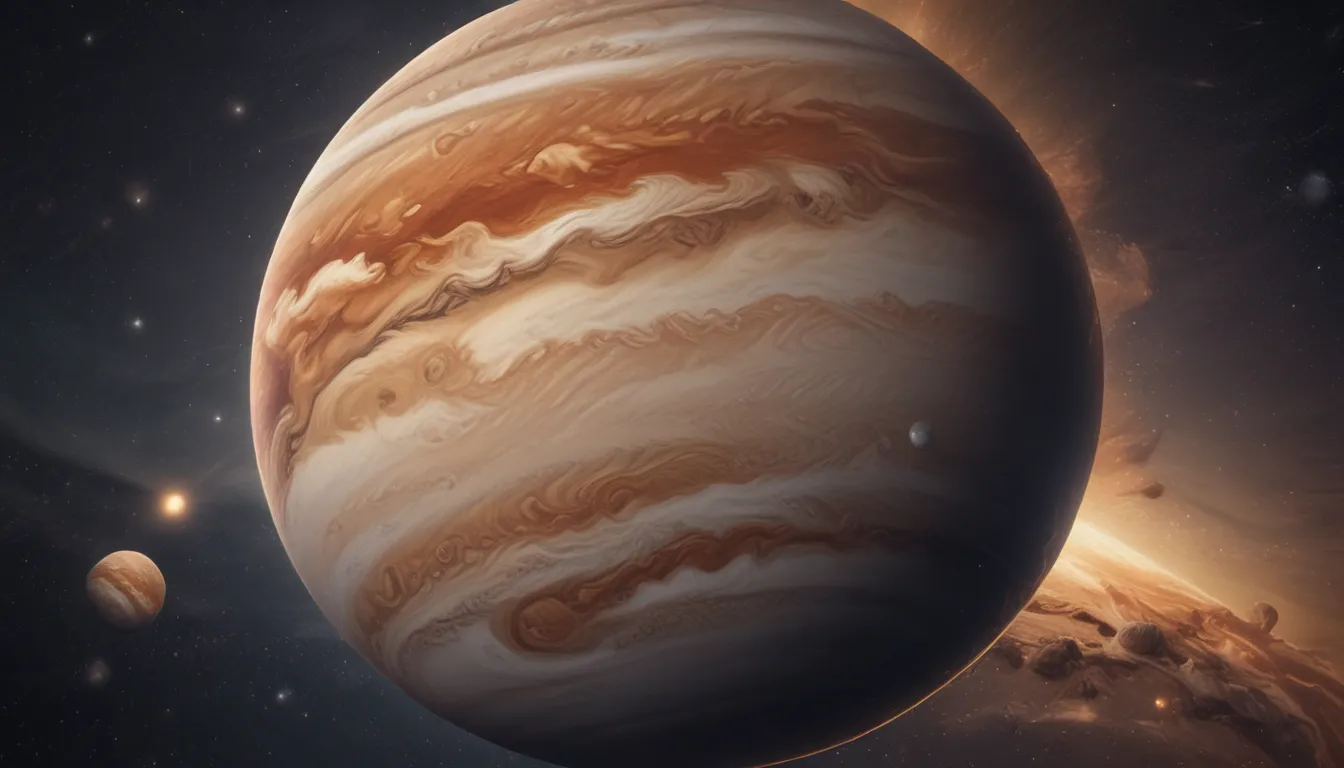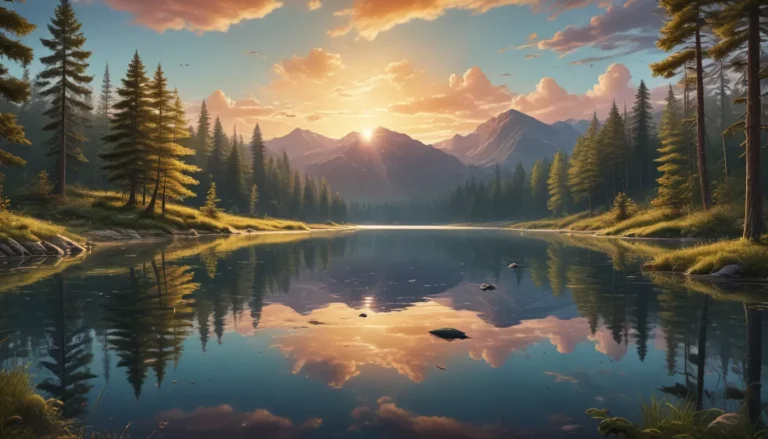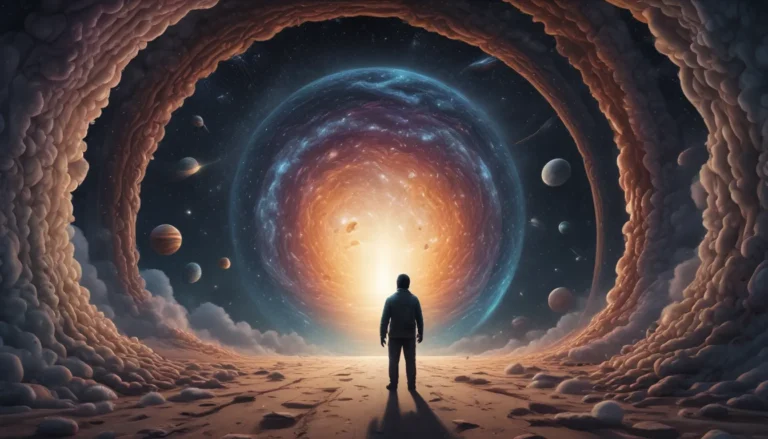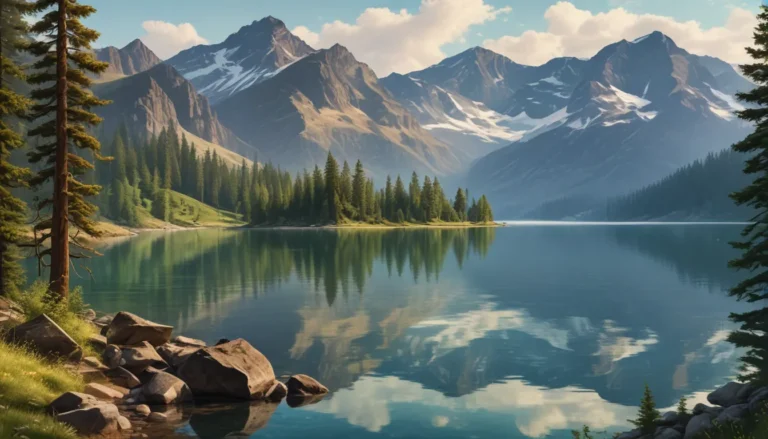The pictures we use in our articles might not show exactly what the words say. We choose these pictures to make you interested in reading more. The pictures work together with the words but don’t take their place. The words still tell you the important facts.
Welcome to a fascinating journey through the wonders of Jupiter, the biggest planet in our Solar System. Named after the Roman King of the Gods, Jupiter holds a myriad of mysteries waiting to be uncovered. Join us as we delve into the captivating world of our celestial neighbor and discover intriguing Jupiter facts that will leave you astounded.
Unveiling the Secrets of Jupiter
Quick Facts
- Jupiter orbits the Sun at an average distance of 778.5 million km.
- It measures 139,822 km across at its equator.
- A year on Jupiter equals 12 years on Earth.
- Hydrogen makes up to 91% of Jupiter's atmosphere.
Essential Facts
- Babylonian astronomers studied Jupiter as early as the 8th Century BC.
- Galileo Galilei discovered Jupiter's 4 largest moons in 1610.
- Nicolaus Copernicus developed the Heliocentric theory inspired by Jupiter.
- Jupiter's atmosphere contains methane and ammonia.
- E.E. Barnard discovered the Jovian moon of Amalthea in 1892.
Interesting Facts
- Jupiter has a thin, faint ring made up of dust.
- It actually puts out more heat than it receives from the Sun.
- Reactions inside Jupiter cause the planet to shrink by 2 cm every year.
- Scientists speculate that ancient Jupiter was twice as big as it is today.
- Venus, Earth, and Mars are closer to Jupiter than they are to the Sun.
Unraveling the Mysteries of Jupiter’s Moons
Jupiter’s Galilean Moons
- Callisto is the second-largest moon of Jupiter.
- Europa boasts the smoothest surface in the Solar System.
- Ganymede reigns as the biggest moon in our Solar System.
- Io is the most volcanically-active body in the Solar System.
- These moons play a crucial role in the exploration of Jupiter.
The Intriguing Great Red Spot
- The Great Red Spot is a powerful storm on Jupiter.
- It predates back to the 17th Century, making it the longest ongoing storm.
- Scientists speculate on the fluctuations in the size of the Great Red Spot.
- Lightning on Jupiter is a thousand times stronger than on Earth.
The Grand Tack Hypothesis and Jupiter’s Role
Jupiter’s Protective Role
- The Grand Tack Hypothesis suggests Jupiter may have destroyed ancient planets in the Solar System.
- Some scientists believe Jupiter protects the inner system from comets and asteroids.
- Jupiter spins the fastest around its axis, leading to shorter days.
- Metallic and liquid hydrogen make up Jupiter's complex structure.
Jupiter’s Radio Waves
- Jupiter and its moon Io generate powerful radio waves.
- These waves result from interactions between Io's volcanic activity and Jupiter's magnetic field.
- The Galilean Moons have unique characteristics worth exploring further.
- NASA's Juno continues to study Jupiter's composition and magnetic field.
The Future of Jupiter Exploration
Human Missions to Jupiter
- NASA has considered future manned missions to Jupiter and its moons.
- Radiation poses a major challenge to the development of Jupiter and its moons.
- Plans for economic exploitation of Jupiter's resources are in the pipeline.
- Callisto presents a promising option for potential human settlements.
Join us on this thrilling voyage through the vast expanse of Jupiter and uncover the countless wonders that await. From the mysteries of the Great Red Spot to the enigmatic Galilean moons, Jupiter continues to captivate and inspire us with its celestial beauty. As we gaze upon this magnificent planet, let us embrace the endless possibilities that lie within the tantalizing realm of Jupiter.






